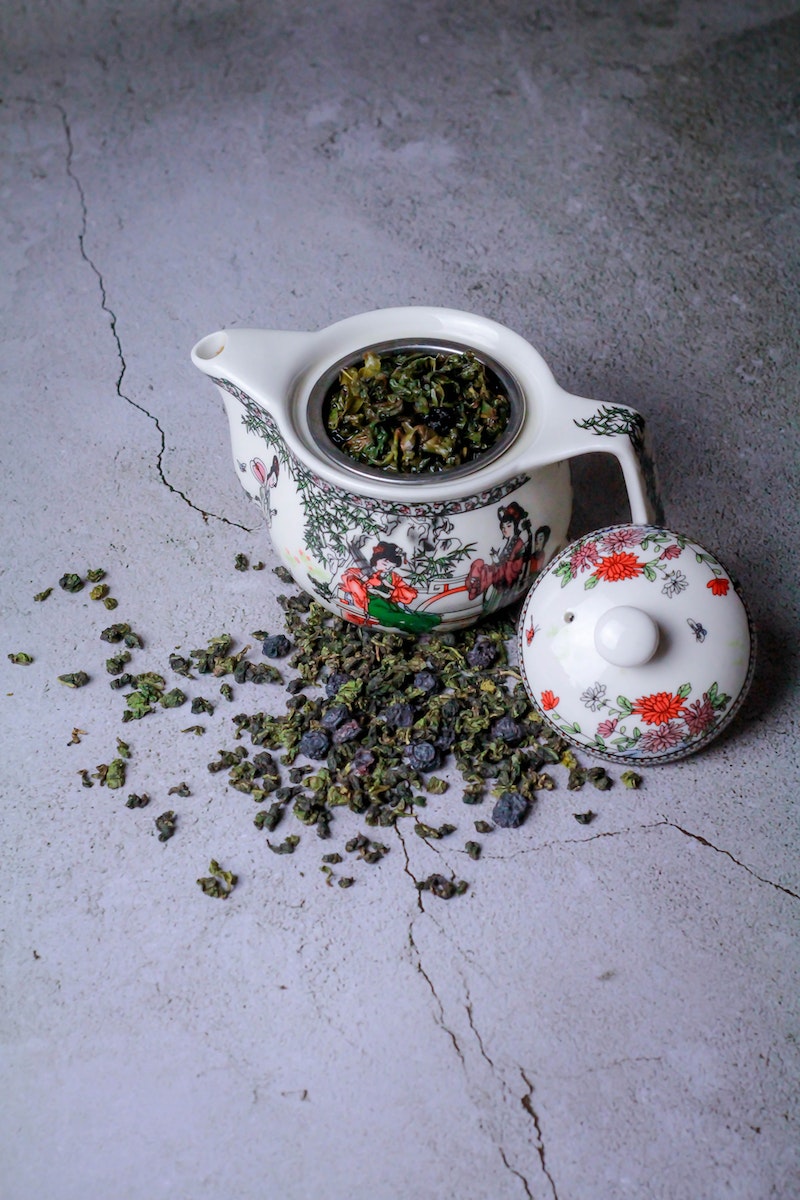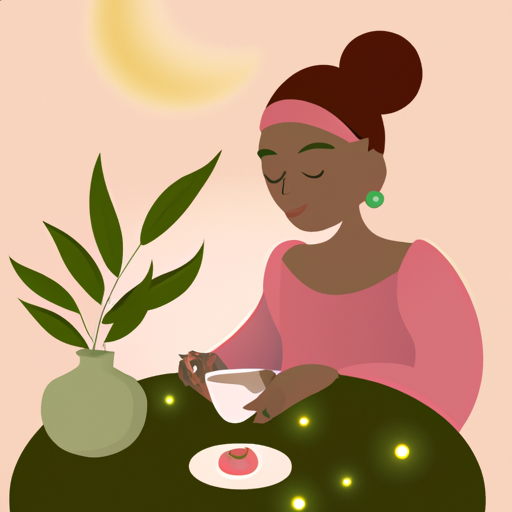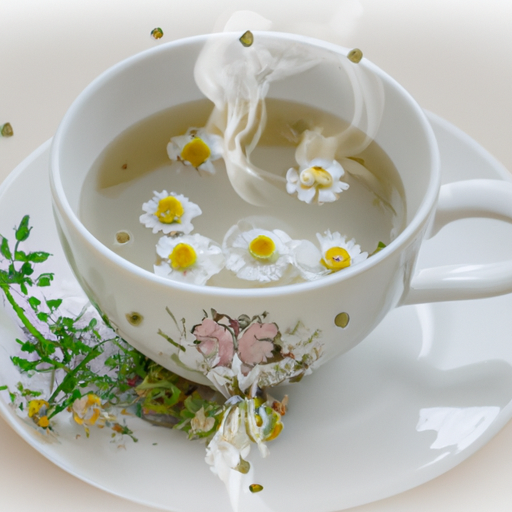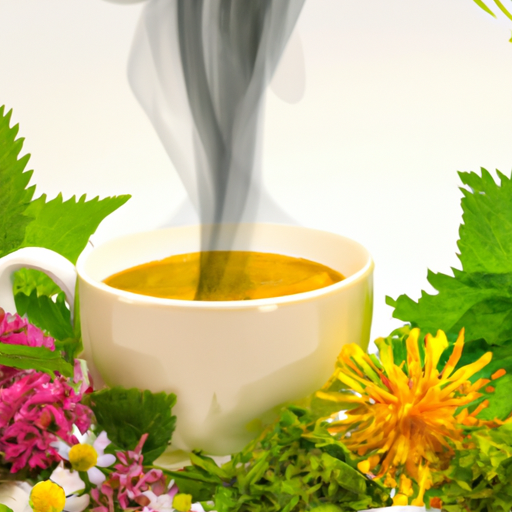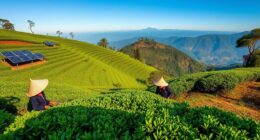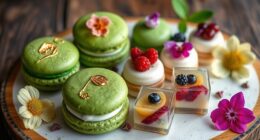Steeping herbal tea is like watching a beautiful sunrise unfold, as the flavors and aromas infuse the water, creating a soothing and delightful experience. But just like the first rays of sunlight, timing is crucial to achieve the perfect cup.
So, how long do you leave the tea infuser in the cup for herbal tea? Let me shed some light on this question. In this article, I will guide you through the art of steeping herbal tea, sharing the optimal steeping times for popular blends and offering techniques to enhance the flavor.
Whether you prefer a calming chamomile, a revitalizing peppermint, or a zesty ginger blend, I’ve got you covered. We’ll also discuss common mistakes to avoid and provide tips for using different types of infusers.
So, grab your favorite mug, and let’s dive into the world of herbal tea steeping!
Key Takeaways
- Steeping time for herbal teas can vary depending on the type of herb used and personal preference.
- Generally, herbal teas should be steeped for 5-7 minutes in boiled water that has cooled for a few minutes.
- Some herbs, such as chamomile and lavender, require longer steeping times of 10-15 minutes.
- Adjusting steeping time allows customization of the tea’s strength, but steeping too long can result in a bitter and overpowering tea.
Understanding Herbal Tea Steeping Times
If you want to unlock the full flavor and benefits of your herbal tea, it’s crucial to know the perfect steeping time. Adjusting the steeping temperature is equally important to ensure you get the most out of your herbal tea experience.
Herbal teas are known for their numerous health benefits, and properly steeping them can enhance these benefits. The steeping time for herbal teas can vary depending on the type of herb used and personal preference. It is generally recommended to steep herbal teas for 5-7 minutes in water that’s been boiled and allowed to cool for a few minutes. This allows the flavors and natural compounds in the herbs to infuse into the water, creating a delicious and beneficial beverage.
Some herbs, like chamomile and lavender, may require a longer steeping time of 10-15 minutes to fully release their flavors and benefits.
Now that you understand the importance of steeping time, let’s explore the specific steeping times for popular herbal teas.
Steeping Times for Popular Herbal Teas
Typically, the recommended steeping times for popular herbal teas vary. Understanding steeping techniques is crucial to achieving the perfect cup of herbal tea.
Different herbs release their flavors and beneficial properties at different rates, so it’s important to know the optimal steeping time for each type. For example, chamomile tea should be steeped for about 5 minutes to fully extract its calming properties. On the other hand, peppermint tea only requires 3-4 minutes to release its refreshing flavor. Steeping times for herbal teas like hibiscus, lavender, and lemongrass can range from 5-7 minutes to allow their vibrant flavors to fully develop.
Herbal teas have numerous health benefits, including promoting relaxation, aiding digestion, and boosting the immune system. By steeping the tea for the recommended time, you can ensure that you are getting the maximum amount of these beneficial compounds. However, it’s important to note that personal preference plays a role in determining the strength of the tea. If you prefer a stronger flavor, you can adjust the steeping time accordingly.
Moving on to the next section about adjusting steeping time for personal preference, it’s important to consider that steeping times are just a guideline and can be modified to suit your taste.
Adjusting Steeping Time for Personal Preference
When it comes to herbal tea, finding the perfect steeping time is crucial to achieving the desired strength of the tea. Adjusting the steeping time allows us to customize our tea to our personal preference. Whether we prefer a stronger or weaker brew, we can experiment with different steeping times. This helps us discover the ideal balance of flavors and aromas that suit our taste buds.
Stronger vs. Weaker Tea
For a bolder brew, let the tea infuser cozy up in your cup a little longer, like a tea party that never wants to end. Adjusting infusion time can have a significant impact on the strength of your herbal tea. The longer the tea infuser stays in the cup, the stronger the flavor becomes. However, it’s essential to keep in mind that increasing the steeping time may also intensify any bitterness or astringency in the tea. To strike a perfect balance, consider experimenting with different steeping times and temperatures.
Here are a few tips to guide you:
- Start with the recommended steeping time and temperature mentioned on the tea packaging.
- Increase the infusion time by 30 seconds to 1 minute for a stronger cup.
- Be mindful of the water temperature as hotter water can extract flavors more quickly.
By fine-tuning your steeping technique, you can discover your ideal brew strength. Now, let’s delve into the next section and explore the concept of experimenting with steeping times.
Experimenting with Steeping Times
Let’s have some fun and explore the exciting world of experimenting with steeping times! When it comes to herbal tea, adjusting infusion time can make a significant difference in the flavor profile. Different herbs release their flavors at different rates, so finding the optimal infusion time is key to unlocking the best taste.
Steeping too long can result in a bitter and overpowering tea, while steeping too short may leave you with a weak and lackluster cup. It’s all about finding that sweet spot where the flavors are perfectly balanced. Pay attention to the recommended steeping times provided by the tea manufacturer, but don’t be afraid to play around and try different durations to discover your personal preference.
Now, let’s move on to techniques that can further enhance the flavor of your herbal tea.
Techniques to Enhance Herbal Tea Flavor
To enhance the flavor of your herbal tea, simply immerse the tea infuser in your cup and allow it to steep for a few minutes. Steeping is the process of extracting the flavors and aromatic compounds from the herbs, and the length of time you steep can greatly impact the taste of your tea.
Here are some techniques to enhance the flavor of your herbal tea:
-
Use fresh herbs: Fresh herbs have a stronger aroma and flavor compared to dried ones. Consider growing your own herbs or purchasing them from a local market for a more vibrant taste.
-
Experiment with temperature: Different herbs require different steeping temperatures. Generally, herbal teas are best steeped in water that’s been brought to a boil and then allowed to cool for a minute or two before pouring it over the herbs.
-
Adjust steeping time: Steeping times can vary depending on the herbs used and personal preference. Start with 3-5 minutes and adjust accordingly to achieve the desired strength of flavor.
-
Add natural sweeteners: Enhance the taste of your herbal tea by adding natural sweeteners like honey or stevia. These can complement the herbal flavors and add a touch of sweetness.
-
Blend different herbs: Create unique flavor profiles by blending different herbs together. This allows you to customize your herbal tea according to your taste preferences.
By following these techniques, you can enhance the aroma and flavor of your herbal tea while enjoying the numerous benefits it offers.
Now, let’s explore some common mistakes to avoid when steeping herbal tea.
Common Mistakes to Avoid
When it comes to enhancing the flavor of herbal tea, there are several techniques that can be used. In my previous subtopic, I discussed some of these techniques, such as adding citrus or honey to the tea. Now, I want to highlight some common mistakes that people often make when preparing herbal tea.
One mistake that’s often made is leaving the tea infuser in the cup for too long. This can result in an over-infused and bitter-tasting tea. To avoid this, it’s important to adjust the water temperature and steeping time according to the specific type of herbal tea you’re using. Different herbs require different steeping times and temperatures to achieve the best flavor.
Another mistake to avoid is using low-quality tea leaves or tea bags. Using loose leaf herbal tea can greatly enhance the flavor and aroma of your tea. Loose leaf tea allows the herbs to fully expand and release their flavors, resulting in a more robust and enjoyable cup of tea.
In the next section, I’ll provide some tips for using different types of infusers that can further enhance the flavor of your herbal tea.
Tips for Using Different Types of Infusers
One mistake to avoid is leaving the infuser in too long, resulting in over-infused and bitter tea. To ensure a perfect cup of herbal tea, it’s important to understand the different types of infusers and how to use them effectively. Here are some tips for using different types of infusers:
-
Mesh Ball Infuser: This type of infuser is ideal for loose leaf herbal teas. To prevent the leaves from escaping, make sure the mesh is fine enough. It’s also important to clean the infuser thoroughly after each use to prevent any residue from affecting the flavor of future brews.
-
Tea Ball Infuser: Similar to the mesh ball infuser, the tea ball infuser is easy to use and clean. However, it’s important to choose the right size for your cup or teapot to allow the tea leaves to expand and infuse properly.
-
Silicone Infusers: These fun and colorful infusers are great for single cups of herbal tea. They’re easy to clean and maintain, but be sure to choose one with a good seal to prevent any leaves from escaping.
-
Tea Bags: While not technically an infuser, tea bags are a convenient option for herbal tea. Opt for high-quality, biodegradable tea bags to ensure the best flavor.
When it comes to infuser maintenance and choosing the right infuser, these tips will help you enjoy a flavorful and satisfying cup of herbal tea. In the next section, I’ll share my final thoughts and recommendations for the best tea brewing experience.
Final Thoughts and Recommendations
In wrapping up, here are my final thoughts and recommendations for achieving the best tea brewing experience.
When it comes to herbal tea, steeping time can vary depending on personal preferences and the specific type of tea you’re using. While there are recommended steeping times for different herbal teas, it’s important to remember that these are just guidelines and you can adjust them to suit your taste.
For herbal teas, the general rule of thumb is to steep them for around 5 to 7 minutes. However, if you prefer a stronger flavor, you can steep them for a bit longer, up to 10 minutes. Keep in mind that steeping herbal teas for too long may result in a more bitter taste, so it’s best to experiment and find the perfect steeping time that suits your palate.
Some herbal teas, such as chamomile or lavender, are more delicate and may require a shorter steeping time, around 3 to 5 minutes, to avoid overpowering their flavors. On the other hand, stronger herbal teas like peppermint or ginger can be steeped for a bit longer to fully extract their robust flavors.
Ultimately, the ideal steeping time for herbal tea is subjective and depends on personal preferences. Experiment with different steeping times to find the perfect balance of flavor and strength that suits your taste buds. Happy brewing!
Frequently Asked Questions
What are the health benefits of drinking herbal tea?
Herbal tea offers numerous health benefits for digestion and weight loss. It aids in digestion by soothing the stomach and promoting healthy bowel movements. Additionally, certain herbal teas can boost metabolism, suppress appetite, and aid in weight loss.
Can I reuse the tea leaves or herbs for another cup of tea?
Sure, you can reuse tea leaves or herbs for another cup of tea. Just make sure to adjust the steeping time based on the type of herbal tea you’re using.
How do I properly clean and maintain my tea infuser?
To properly clean and maintain your tea infuser, follow these best practices and tips. Start by rinsing the infuser under running water after each use. Then, use a brush or toothpick to remove any trapped particles. Finally, air dry or towel dry the infuser before storing it.
Can I drink herbal tea if I am pregnant or breastfeeding?
As an expert, I want to address concerns about drinking herbal tea during pregnancy and breastfeeding. It’s important to consult with your healthcare provider, as some herbal teas may have potential risks for you and your baby.
Are there any potential side effects or precautions to consider when consuming herbal tea?
When consuming herbal tea, it’s important to be aware of potential interactions with medications. It’s also crucial to follow the recommended dosage for herbal tea during pregnancy to ensure the safety of both mother and baby.
Conclusion
Well, it seems we’ve come to the end of our herbal tea journey. Who would’ve thought that something as simple as steeping time could’ve had such a big impact on the flavor of our beloved brew? But alas, that’s the beauty of tea – it’s all about finding the perfect balance.
So, the next time you’re craving a warm cup of herbal goodness, remember to take a moment to consider the steeping time. And who knows, maybe you’ll stumble upon a combination that surprises even the most seasoned tea connoisseurs.
Cheers to the perfect cup of tea!


